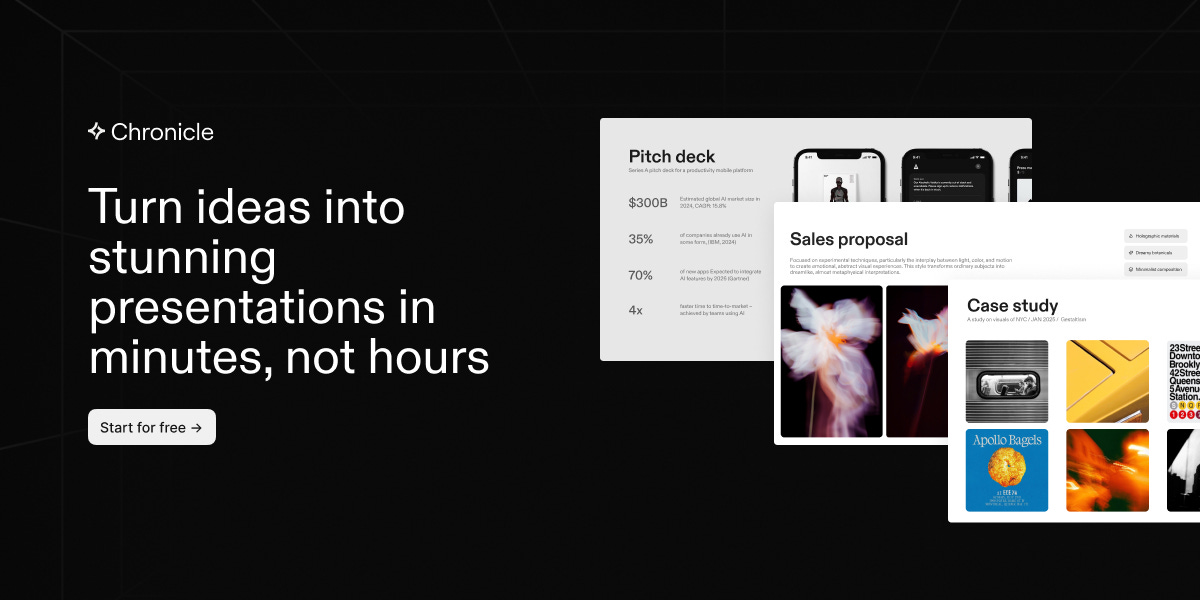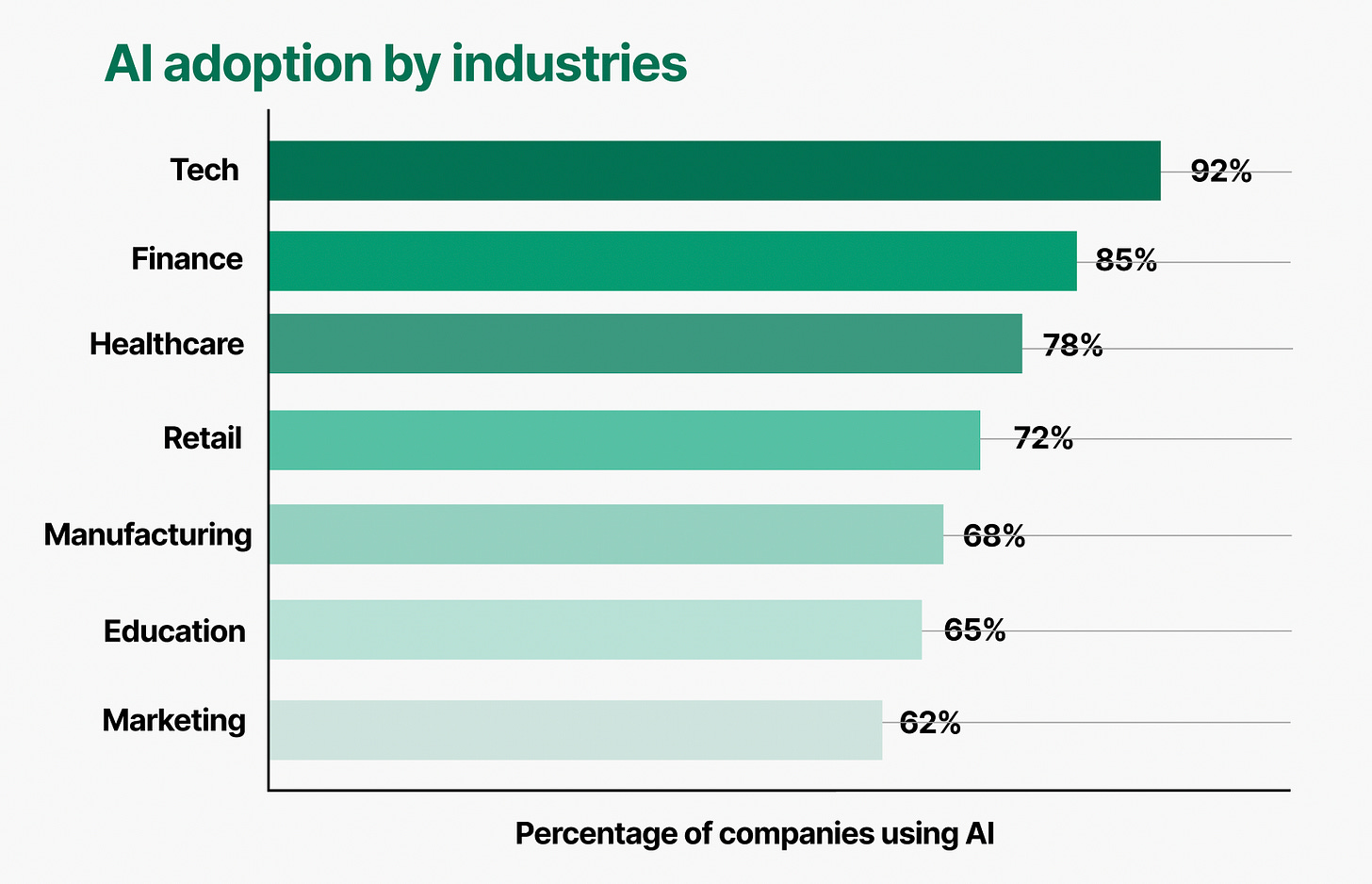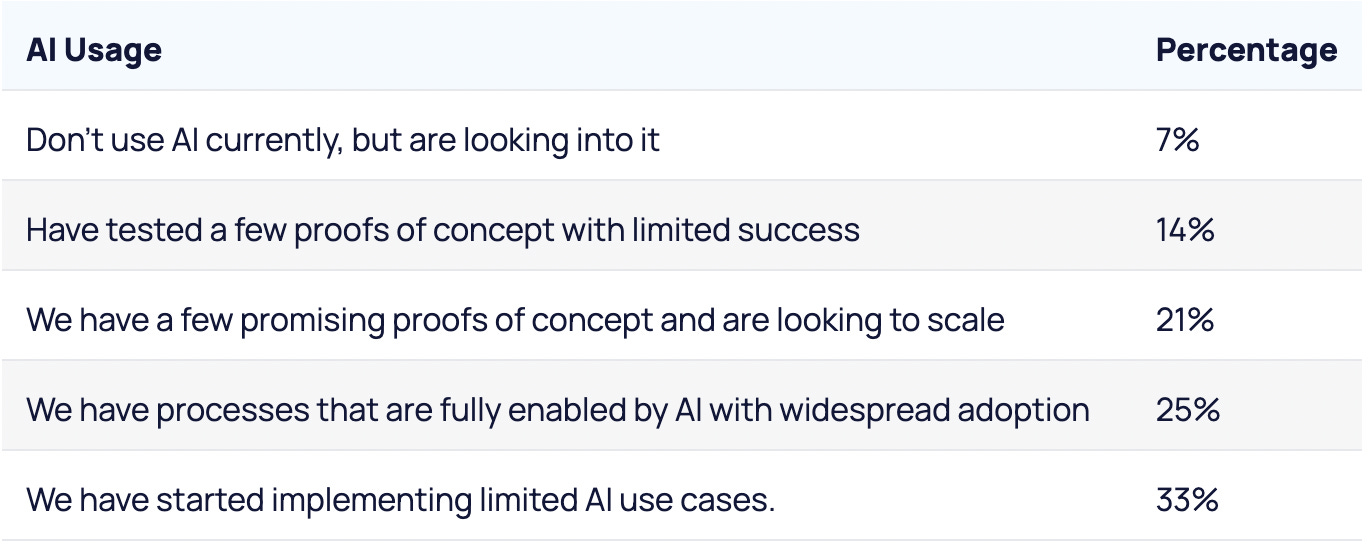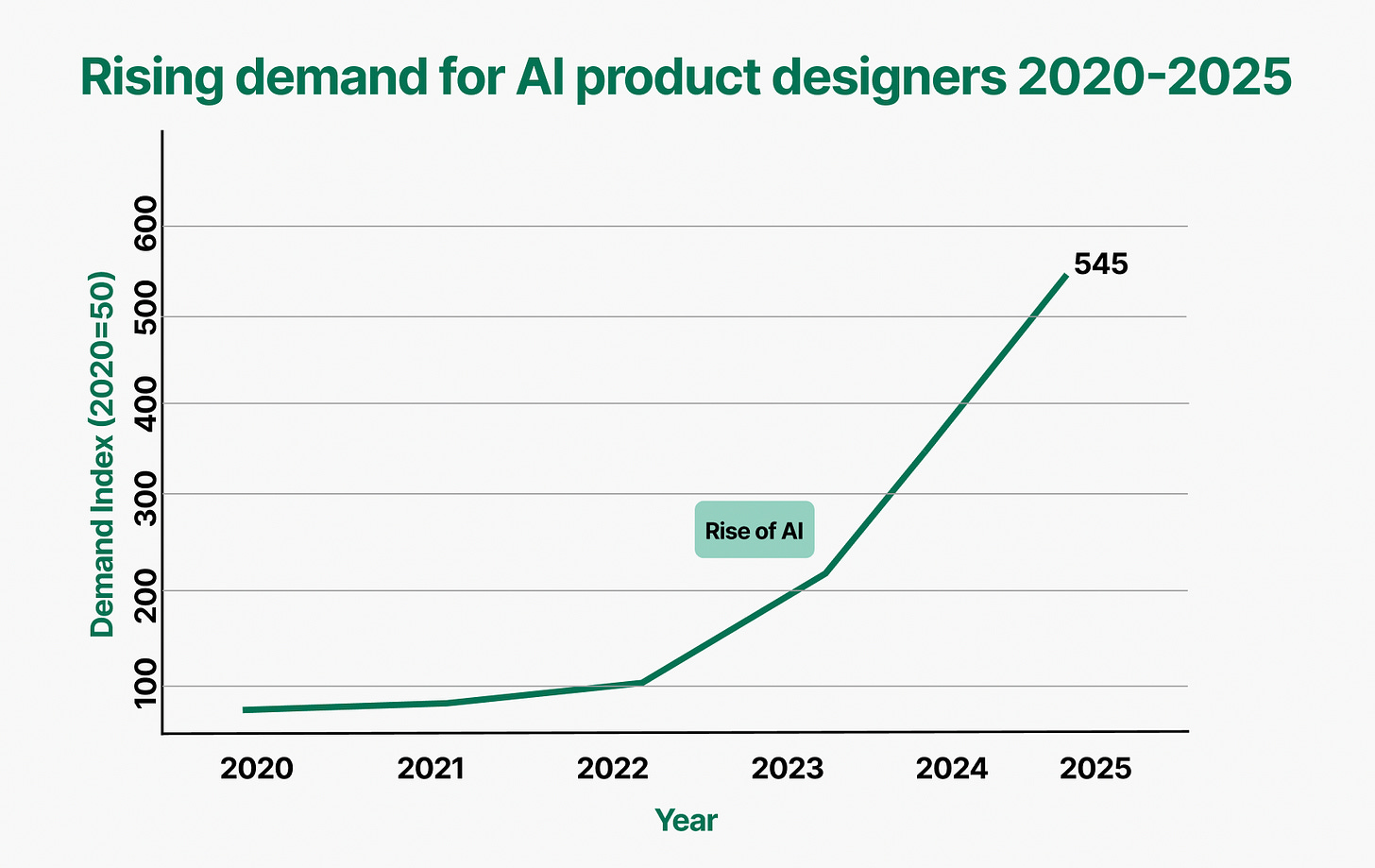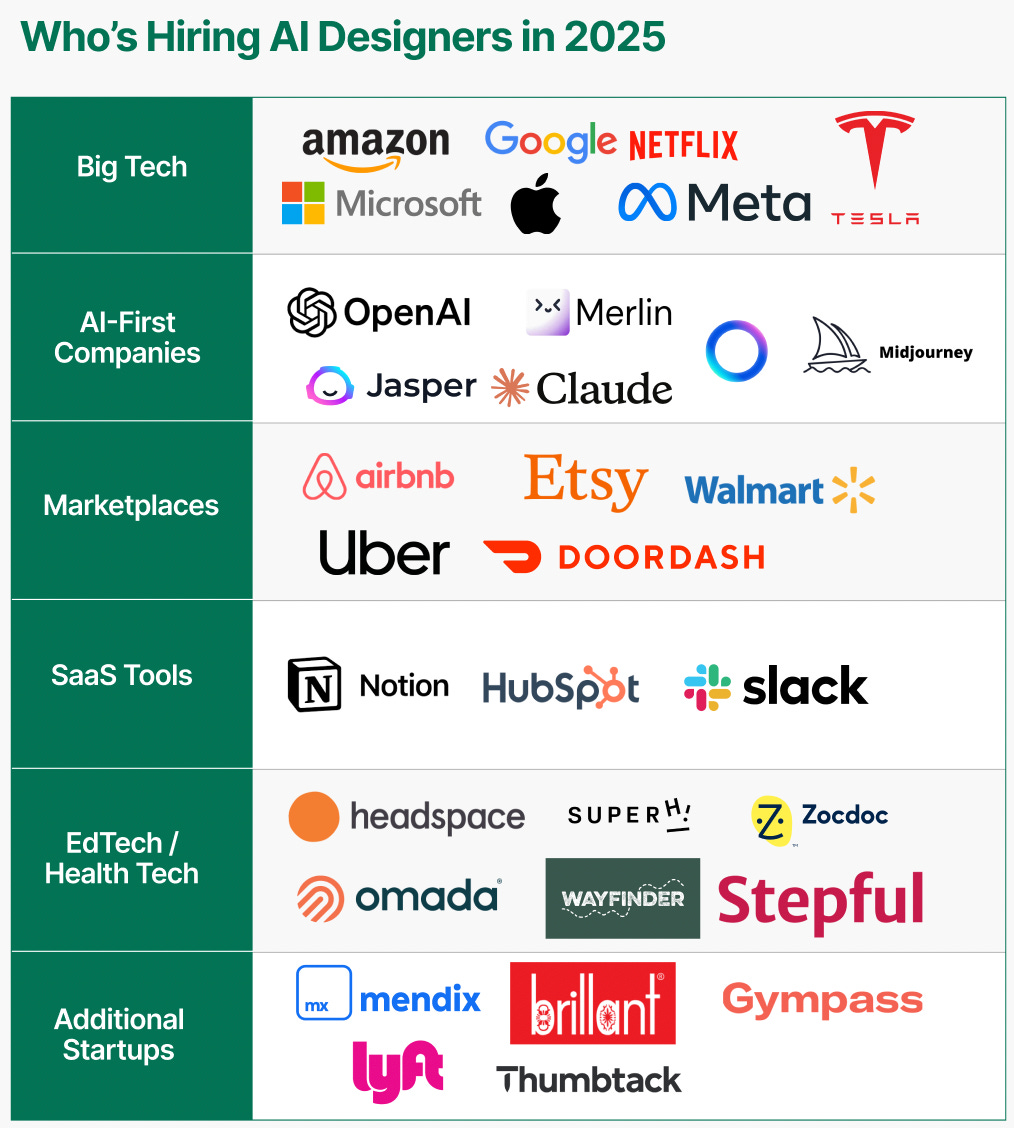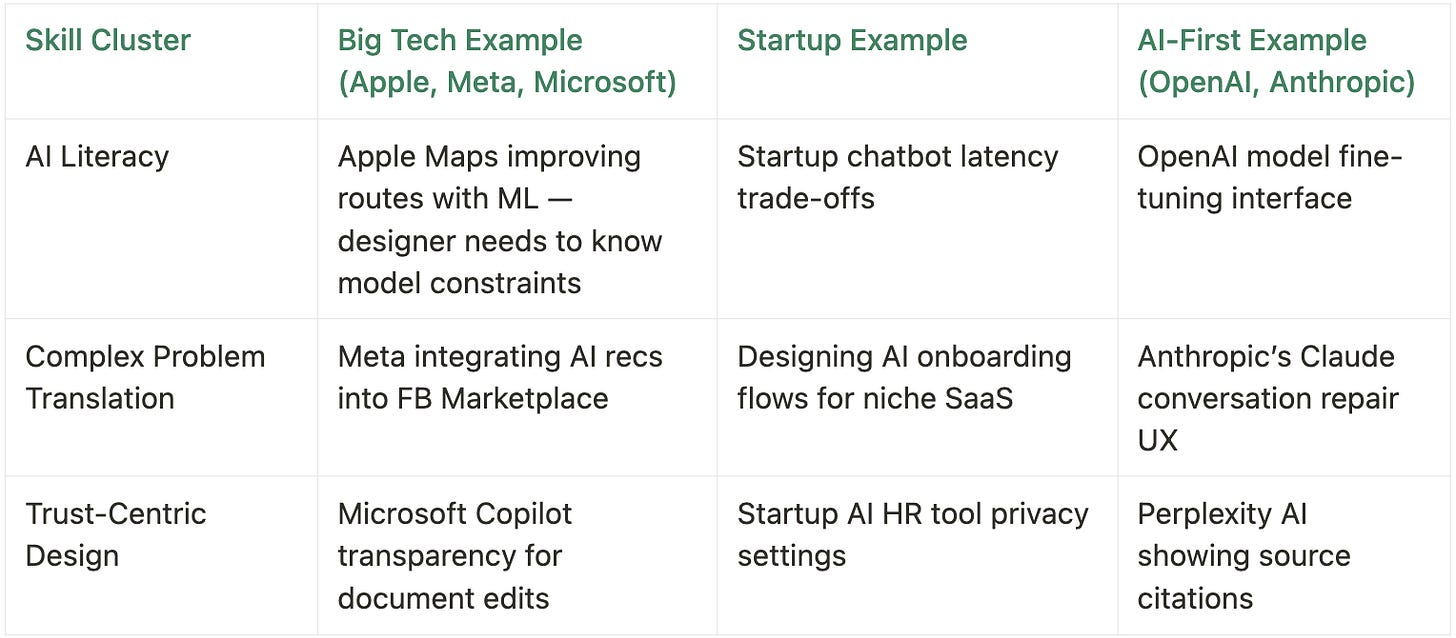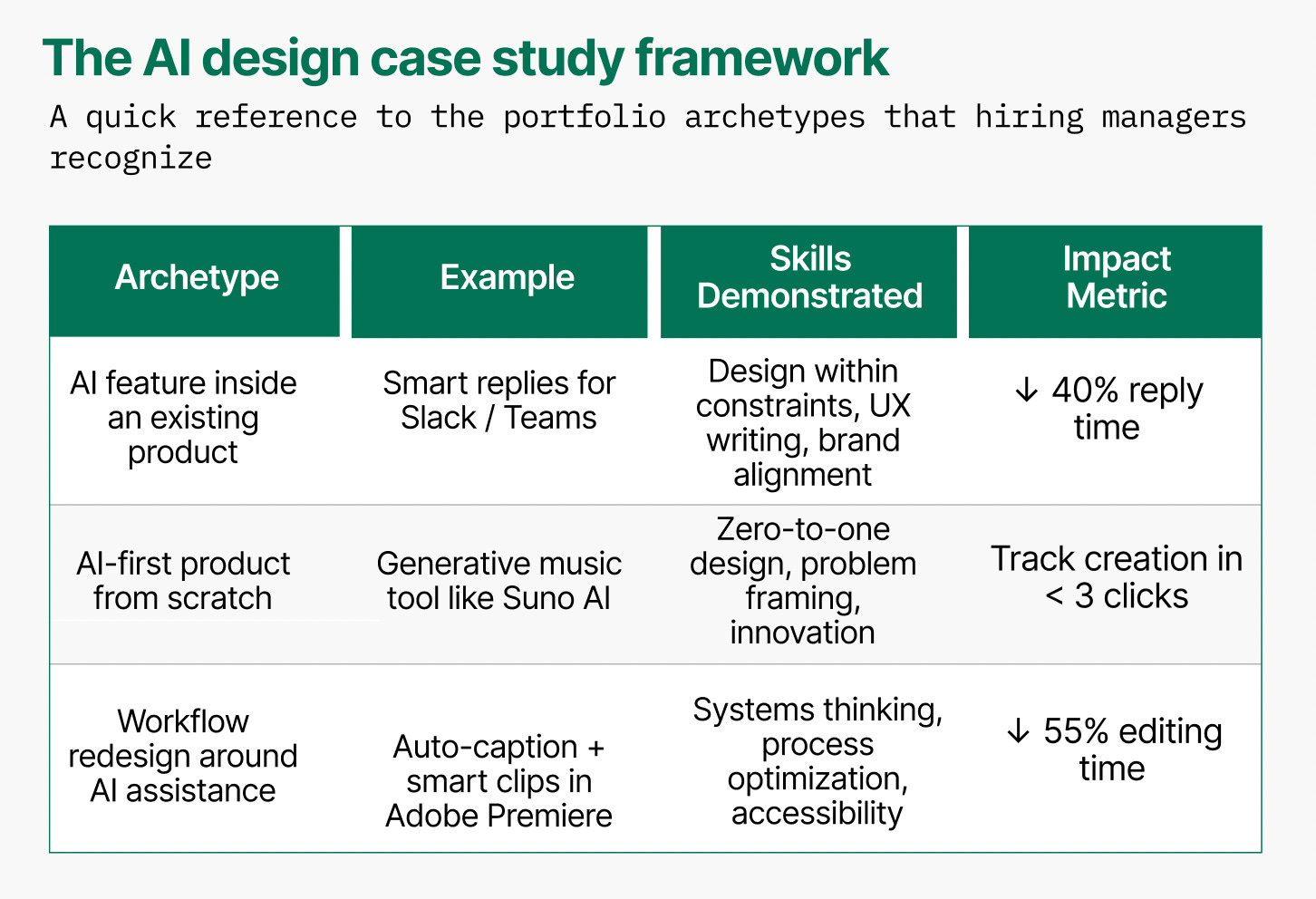Portfolio checklist for AI-first designers
Breaking down what recruiters really want in a design portfolio in an AI-first world
Hey there! This is a 🔒 subscriber-only edition of AI First Designer (by ADPList) 🔒, to help designers transition into successful AI-First builders. Members get access to proven strategies, frameworks, and playbooks. For more: Get free 1:1 mentorship | Early-bird AI Designer Course
Today’s newsletter brought to you by Chronicle.
Finally, presentations that match your design taste! Chronicle imports your brand themes & fonts, creates structured narratives, and embeds Figma/Framer work seamlessly. Perfect for portfolios and product showcases. Like Cursor for slides. Get one month of free Chronicle Pro.
Hi AI-First friends,
Over the past six months, I’ve spoken with AI design hiring managers, dissected winning portfolios, and pinpointed the patterns that consistently get you to the interview stage.
And there was a simple conclusion: AI product design interviews are deceptively tricky.
But why do we care about AI as designers?
Around 4 in 5 companies deem AI to be a top priority in their business strategy (Forbes). A whopping 83% of companies claim that using AI in their business strategies is a top priority.
Here's a look at current company usage of AI:
This shift means that AI product design isn’t just another niche, but it’s becoming a core skill.
In your design portfolio, you’re not just showing that you can design beautiful interfaces, but you’re proving you can design for products powered by artificial intelligence. That means showing:
You understand AI capabilities and limitations.
You can translate complex model outputs into intuitive, human-centered experiences.
You can collaborate seamlessly with data scientists, product managers, and engineers to make AI features usable.
The reality? Most portfolios don’t do this. They often read like they could belong to any product designer. But at places like OpenAI, Slack, Uber, Notion, Anthropic, or Midjourney, your work needs to scream, “I know how to design with AI in mind.”
In this newsletter, I’ll break down exactly how to build that portfolio — the kind that gets hiring managers to pause, click, and send you an invite.
Here’s what we’ll cover:
The AI Product Design Landscape — Who’s hiring, what they’re looking for, and why the bar for portfolios has risen sharply in 2025.
Core Portfolio Ingredients — The case study types and storytelling patterns that prove your AI fluency.
Why AI Context Matters — Demonstrating awareness of model trade-offs, ethical design, and cross-functional collaboration.
Quantifying Your Work — Turning impact into metrics that speak louder than screenshots.
What Makes Hiring Managers Sit Up — Strategic storytelling, transparent processes, and the “practitioner’s voice.”
A Competitive Edge — How a ‘wild card’ AI side project or personal experiment can make you unforgettable.
Bonus Data Points — Stats to weave into your portfolio narrative, like how 70% of new apps now leverage low-code AI tools, or how AI investments yield $3–$3.70 per $1 spent.
By the end of this piece, you’ll have a clear framework for presenting your work in a way that speaks to the realities of designing AI-powered products and meets the expectations of the companies hiring for these roles.
So let’s dive in…
Part 1: Set your foundation
Before you start thinking about case study layouts or color palettes, it’s worth understanding the context you’re designing for.
AI product design roles in 2025 exist at the intersection of rapidly evolving technology and rising user expectations. The companies hiring in this space aren’t just looking for designers who can produce visually polished work; they’re looking for problem-solvers who can navigate model constraints, data ambiguity, and ethical trade-offs while still delivering a seamless product experience.
This section will give you clarity on:
Who’s hiring for these roles and why
What’s driving demand for AI-focused design skills
The core capabilities that set apart AI product designers from traditional generalists
1. The AI product design hiring landscape in 2025
The market for AI product designers has grown significantly over the past two years. According to LinkedIn’s Emerging Jobs report, roles involving “AI” in the title have increased 21% year-over-year, with product design-specific roles accounting for a growing share.
Where the jobs are:
Big Tech: Apple, Meta, Microsoft, Google, Tesla — investing heavily in AI-powered assistants, generative design tools, in-car AI experiences, and multimodal capabilities that combine text, voice, and vision. These companies expect designers to think at scale, often designing for hundreds of millions of users at once.
Marketplaces: DoorDash, Uber — using AI for matching supply and demand, optimizing delivery routes, and dynamic pricing.
SaaS Tools: Slack, Notion, Atlassian — integrating AI to boost productivity, automate workflows, and surface relevant information faster.
AI-First Companies: OpenAI, Anthropic, Midjourney — building entirely AI-powered products where the design challenge is making advanced capabilities approachable and trustworthy.
HealthTech & Wellbeing: Ro, Zocdoc, Headspace — using AI to personalize treatment plans, automate scheduling, or provide adaptive content.
In all these cases, AI product designers are brought in not just to skin an interface but to help define how AI capabilities are revealed, explained, and trusted by users.
2. Why companies need AI-savvy designers?
For most companies hiring in this space, AI is not a side feature — it’s central to the product’s value proposition. This creates design challenges that are fundamentally different from traditional feature design:
Interpreting complex outputs: AI often returns results that are probabilistic, not deterministic. Designers need to decide how to present this uncertainty without eroding user trust.
Integrating AI into workflows: The value of AI comes from fitting seamlessly into existing patterns, not forcing users to change their behavior entirely.
Balancing automation and control: Users want efficiency, but also the ability to override, correct, or fine-tune AI decisions.
At Slack, for example, AI search and summarization had to be designed in a way that didn’t overwhelm users with “black box” results. At Uber, driver dispatch algorithms needed UI that clearly explained why a ride was assigned — without revealing sensitive data.
These companies hire AI-savvy designers because they need people who can bridge the technical and the human, ensuring the technology serves the experience, not the other way around.
3. Core skills beyond design aesthetics
In AI product design, being able to produce pixel-perfect mockups is table stakes. The hiring bar is rising fast, and companies now expect designers to think like product strategists, AI interpreters, and trust builders.
Recruiters and hiring managers repeatedly emphasize three core skill clusters that separate top candidates from the rest, but each of these has layers, and how you demonstrate them can be the difference between “nice portfolio” and “we want to hire you immediately.”
3.1 AI literacy
The first differentiator is about understanding the engine under the hood. You don’t need to code a transformer model, but you should be fluent enough in AI concepts to make sound design decisions.
What AI literacy looks like in practice:
Model fundamentals
Understand how models are trained, what kind of data they use, and concepts like precision vs. recall.
Example: Knowing why a medical AI tool should optimize for recall (catch more possible cases) even at the cost of more false positives.Recognizing bias & blind spots
Be able to spot when a model might have skewed outputs due to training data imbalance.
Example: Identifying that a recruitment AI trained mostly on past male candidates may unfairly score women lower.Understanding model confidence
Confidence scores are your friend, but also a UX challenge. You need to decide if and how to expose uncertainty to the user.Knowing AI’s limits
Be realistic about what’s feasible now vs. in the near future. Overpromising kills trust faster than bad design.
3.2 Complex problem translation
AI product design often starts in a fog of technical ambiguity. Engineers and data scientists speak in probabilities, feature weights, and embeddings. Your job is to translate that complexity into user-facing clarity.
What strong translation skills look like:
Clarifying requirements
Ask precise questions to unpack vague requests like “We need to improve recommendations” into concrete design goals.Mapping the user journey for AI
Identify where AI adds value, where it should stay invisible, and where you must explain it.Designing for failure modes
Every AI will get things wrong — the real skill is deciding how the product behaves when it does.
Example: A travel AI that can’t find your hotel should gracefully suggest alternatives instead of throwing an error.Cross-functional fluency
Be able to jump between a data scientist’s Jupyter Notebook demo and a usability test report without losing context.
3.3 Trust-centric design
Trust is the currency of AI adoption. Without it, even the most powerful AI won’t get used. This is where design moves beyond visuals into ethics, transparency, and human psychology.
Key trust-building principles:
Transparent Model Behavior
Explain why the AI made a suggestion without overwhelming the user with jargon.
Example: “We recommended this article because you’ve read similar topics recently.”User Control & Opt-Out
Always give users the ability to override AI decisions or turn AI features off entirely.Avoiding Over-Personalization
Recommendations that feel too invasive (“We noticed you bought a pregnancy test…”) can backfire.Balancing Helpfulness & Privacy
The more data you use, the better the AI gets, but users need to feel safe sharing that data.
3.4 How these skills show up in portfolios
The most competitive AI design portfolios don’t just show what you built but how you thought.
Hiring managers look for case studies that demonstrate:
Clear articulation of the AI challenge (technical + human).
Evidence of cross-functional collaboration.
Examples of handling uncertainty or incomplete data.
Ethical trade-off discussions (privacy vs. personalization, accuracy vs. speed).
Screens or flows demonstrating how you handled AI mistakes with grace.
3.5 Company-specific nuances
Different companies emphasize these skills in different ways:
Apple: Focus on invisible, seamless AI — you rarely “see” the AI, but it’s there, enhancing the experience.
Meta: Scale thinking — designing for billions of users and diverse cultural contexts.
Microsoft: Enterprise AI — making AI accessible and safe for professional workflows.
Tesla: Real-time, high-stakes AI — designing for products where safety is paramount.
OpenAI & Anthropic: Conversational AI — handling ambiguity in natural language interactions.
This skill set is the new baseline for AI product design interviews. The designers who stand out are systems thinkers, translators, & trust architects.
Part 2: Building your portfolio
Once you’ve understood the hiring landscape and the skills companies value, the next step is making those capabilities obvious in your portfolio. In AI product design, a generic “pretty screens” portfolio won’t cut it.
Recruiters at Apple, Meta, Microsoft, Tesla, Amazon, and AI-first companies like OpenAI, Anthropic, Midjourney, and ElevenLabs want to see exactly how you approached AI-specific problems, navigated constraints, and measured results.
The key is to frame your work in ways that make the “AI layer” (the messy, probabilistic, unpredictable part of the product) visible and compelling.
4. Case study archetypes that get attention
Hiring managers at Apple, Meta, Microsoft, Tesla, and AI-first leaders like OpenAI, Anthropic, and Midjourney often scan through dozens of AI design portfolios in a week. Most are “cool AI apps” with slick mockups, but only a few stand out because they frame the work in a way that proves design impact.
Position your projects into archetypes recruiters instantly understand and that clearly map to business value.
a) AI feature inside an existing product
Why it works:
Demonstrates how to integrate AI into established workflows without compromising the user experience.
Demonstrates ability to work within an existing design system, constraints, and brand tone.
Example:
Designing AI-powered smart replies for Slack or Microsoft Teams.
Challenge: The AI had to sound “human” while matching the professional tone of each brand.
Outcome: Reduced average reply time for users by 40% in internal tests.
b) AI-first product from scratch
Why it works:
Shows you can design an end-to-end AI experience without an existing playbook.
Demonstrates adaptability, problem framing, and creative exploration.
Example:
Building a generative music tool like Suno AI or a research assistant like Perplexity.
Challenge: Defining what the core interaction loop looks like when there’s no industry standard.
Outcome: Created an interface that allowed new users to generate a 60-second track in under 3 clicks.
c) Workflow redesign around AI features
Why it works:
Shows you can zoom out and redesign a process, not just insert AI as a gimmick.
Demonstrates systems thinking and user journey optimization.
Example:
Redesigning a video-editing workflow for Adobe Premiere to integrate auto-captioning and smart clip suggestions.
Challenge: Existing workflow required manual captioning and clip trimming — slow and repetitive.
Outcome: Cut editing time by 55% and improved accessibility compliance for creators.
5. Showing the “AI layer” in your process
One of the biggest mistakes designers make in AI portfolios is showing only the polished end state (the beautiful final screen). For AI products, that’s not enough.
Hiring managers at places like OpenAI, Meta, Microsoft, and Notion want to see if you understand the messy middle: the quirks, limits, and unpredictability of AI models. They’re not just hiring you for your taste in typography; they’re hiring you to design systems that stay usable even when AI misbehaves.
Here’s what to make it visible:




